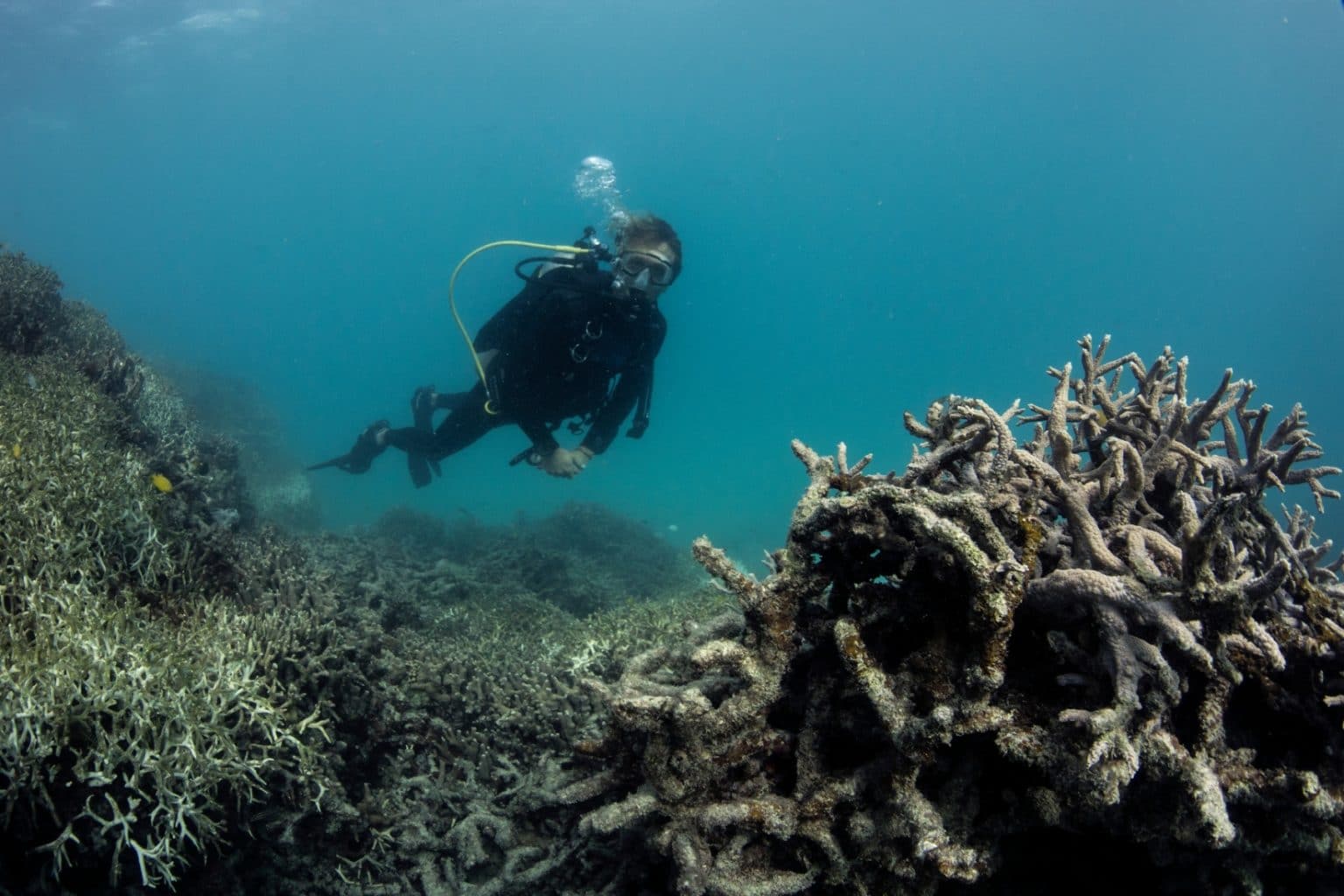The Australian published a convoluted story recently about the Great Barrier Reef and the claims of a scientist over some old pictures.
I’ve written a few stories about the reef recently – including this piece looking at a recent dodgy editorial in The Australian. But anyway, over the weekend The Australian published a story about Professor Peter Ridd, of James Cook University, who had apparently been disciplined for criticising colleagues and the Great Barrier Reef Marine Park Authority (GBRMPA) for using some old pictures of reef near Stone Island to show how coral cover had declined over time.
According to Graham Lloyd, The Australian’s environment editor, Ridd said the pictures – from between 1890 and 2012 – didn’t show for sure the reefs were declining. Scientists needed to be more sceptical, he said.
Remembering for a minute the reef has just gone through its worst bleaching event on record leading to the death of a quarter of the corals. This is a huge and historic event that will impact the reef for the rest of our lifetimes. And then there’s an argument over some old photographs – an argument which, it turns out, is questonable in the first place.
For kicking up a stink, Ridd was reportedly almost fired.
The Australian also reported that Ridd had sent scientists out to check on the reef in question – valiantly displaying the kind of scientific skepticism that was so lacking in others. Some areas were actually OK, The Australian said. But the story was built on two supremely flaky arguments.
The first is that GBRMPA – the government agency that manages the reef – made claims about the pictures that were not true. We’ll see in a minute that this did not actually happen – at least using the same references cited by The Australian.
The second is that scientists hadn’t checked on the corals at Stone Island to work out what was going on, and if they had they might have a different story. We’ll also see that this, too, is flaky. A peer reviewed study published earlier this year reports on a visit to those reefs and was actually co-authored by a senior GBRMPA scientist – Dr David Wachenfeld. According to The Australian, Ridd’s “crime” that led to him being told off by his bosses was to…
… encourage questioning of two of the nation’s leading reef institutions, the Centre of Excellence for Coral Studies and the Great Barrier Reef Marine Park Authority, on whether they knew that photographs they had published and claimed to show long-term collapse of reef health could be misleading and wrong. “These photographs are a big deal as they are plastered right across the internet and used very widely to claim damage,” Professor Ridd told The Weekend Australian.
But did GBRMPA actually claim the photographs “show long-term collapse of reef health”? The Australian is discussing the use of the photographs in GBRMPA‘s 2014 Outlook Report, where they appear on page 17. The quote The Australian picks out to back this claim is this:
Historical photographs of inshore coral reefs have been especially powerful in illustrating changes over time. The changes in the fringing reefs at Stone Island are typical of many inshore reefs.
The quote is actually a caption for the photographs, but was only partially reproduced. Here’s the rest of the caption:
They largely took place before monitoring programs began — illustrating that modern assessments of the condition of coral reefs are likely to be based on an already shifted baseline.
The actual body copy from the same page of the report makes no specific claims about what the photographs show. The photographs have also been of interest to a team of scientists based at the University of Queensland, who visited the area in 2012 to try and work out the condition of the reefs at Stone Island and what might have caused the declines shown in the photographs. Indeed, one of the co-authors of the study is Dr David Wachenfeld, who is director of reef recovery at GBRMPA. So what does the paper say about the photographs?
However, these photographs cannot provide definitive proof that these reefs are in a state of decline as they only offer two (three for Stone Island: c.1890, 1915 and 1994) qualitative ‘snap-shots’ over a ~100 year time period.
That seems suitably sceptical to me! So what condition was Stone Island in when the scientists visited?
At Stone Island, the reef crest was similar to that observed in 1994 with a substrate almost completely devoid of living corals. The timing of the changes observed in the photographs then becomes particularly important not only for understanding the potential drivers behind the coral mortality, but also to reliably assess the current status of the reef by gaining some perspective on the length of time between disturbance and recovery.
So the scepticism that Ridd calls for through The Australian had already been exercised – some of it by the same people he was criticising. The Australian also suggested to readers that “a paper published this year claimed scientific journals had exaggerated bad news on ocean acidification and played down the doubts”. I strongly suspect that Lloyd was referencing the same flawed story I looked at for this piece for DeSmog – which was also used in that dodgy editorial a few days ago.
Like I said – the whole story is, to be polite, pretty convoluted. This didn’t stop the right-leaning Daily Caller and contrarian scientist Dr Judith Curry, a favourite voice among climate science denialists, from parroting the story. Curry was more interested in Ridd’s censure by the university than she was about whether his clamis were accurate or not. The Daily Caller even managed to misreport the story, telling its readers that Ridd had been disciplined for “questioning global warming orthodoxy” when the story made no mention of climate science or global warming.
While going to great lengths to construct the story, The Australian left out a couple of bits about Professor Ridd that might seem relevant.
Ridd is the “science director” at the Australian Environment Foundation, which claims that wind farms make make people sick and that climate change might not be caused by humans but, if it is, it probably won’t be all that bad. The AEF has historical links to the Institute of Public Affairs, the Melbourne-based free market think tank and key pusher of climate science denial in Australia.
At James Cook University, Ridd also runs the Marine Geophysics Laboratory, which seems to spend a lot of time working on projects related to fossil fuel export terminals. The most recent scientific study posted on Ridd’s university publications page was a paper he co-authored in the journal PLOS One. According to the paper, which found that dredging can impact corals at distances of 20 kilometres, the research was funded by fossil fuel companies Chevron Australia, Woodside Energy Limited and BHP Billiton.
Last year in an interview with the ABC, Ridd responded to questions over a potential for conflict of interest relating to his laboratory’s work on fossil fuel projects.
Do I have a vested interest? Well, all the money that’s raised through the university goes into PhD scholarships, into developing more instrumentation, funding research. If you think that’s a vested interest, then it is. I’ll let you make that decision.
This is an updated version of a post first published at readfearn.com.
Main Image: A diver surveys bleached and now dead coral covered in algae on Lizard island, Great Barrier Reef. Credit: XL Catlin Seaview Survey
Subscribe to our newsletter
Stay up to date with DeSmog news and alerts







